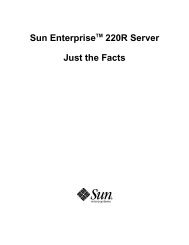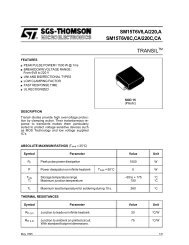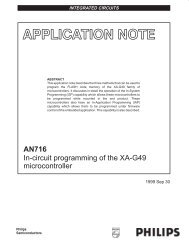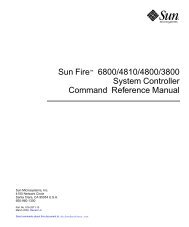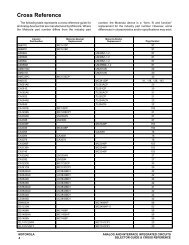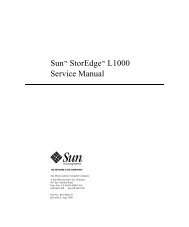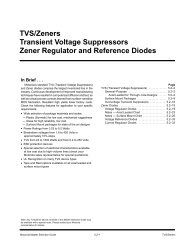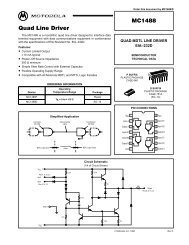MAX192 Low-Power, 8-Channel, Serial 10-Bit ADC - Robotics UWA
MAX192 Low-Power, 8-Channel, Serial 10-Bit ADC - Robotics UWA
MAX192 Low-Power, 8-Channel, Serial 10-Bit ADC - Robotics UWA
Create successful ePaper yourself
Turn your PDF publications into a flip-book with our unique Google optimized e-Paper software.
<strong>Low</strong>-<strong>Power</strong>, 8-<strong>Channel</strong>,<strong>Serial</strong> <strong>10</strong>-<strong>Bit</strong> <strong>ADC</strong><strong>MAX192</strong>Track/HoldThe T/H enters its tracking mode on the falling clock edgeafter the fifth bit of the 8-bit control word has been shiftedin. The T/H enters its hold mode on the falling clock edgeafter the eighth bit of the control word has been shifted in.If the converter is set up for single-ended inputs, IN- isconnected to AGND, and the converter samples the “+”input. If the converter is set up for differential inputs, INconnectsto the “-” input, and the difference of |IN+ - IN-|is sampled. At the end of the conversion, the positiveinput connects back to IN+, and C HOLD charges to theinput signal.The time required for the T/H to acquire an input signal isa function of how quickly its input capacitance ischarged. If the input signal’s source impedance is high,the acquisition time lengthens and more time must beallowed between conversions. Acquisition time is calculatedby:t AZ = 9 (R S + R IN ) 16pFwhere R IN = 5kΩ, R S = the source impedance of the inputsignal, and t AZ is never less than 1.5µs. Note that sourceimpedances below 5kΩ do not significantly affect the ACperformance of the <strong>ADC</strong>.Input BandwidthThe <strong>ADC</strong>’s input tracking circuitry has a 4.5MHzsmall-signal bandwidth, so it is possible to digitizehigh-speed transient events and measure periodic signalswith bandwidths exceeding the <strong>ADC</strong>’s sampling rateby using undersampling techniques. To avoid high-frequencysignals being aliased into the frequency band ofinterest, anti-alias filtering is recommended. See the datasheets for the MAX291–MAX297 filters.Table 1. <strong>Channel</strong> Selection in Single-Ended Mode (SGL/DIFF = 1)Analog Input Range and Input ProtectionInternal protection diodes, which clamp the analoginput to V DD and AGND, allow the channel input pins toswing from AGND - 0.3V to V DD + 0.3V without damage.However, for accurate conversions near full scale,the inputs must not exceed V DD by more than 50mV, orbe lower than AGND by 50mV.If an off-channel analog input exceeds the suppliesby more than 50mV, current will flow through theprotection diodes on that input. If this currentexceeds 2mA, the accuracy of the on-channel’s conversionwill be degraded.The <strong>MAX192</strong> can be configured for differential (unipolaror bipolar) or single-ended (unipolar only) inputs, asselected by bits 2 and 3 of the control byte (Table 3).In the single-ended mode, set the UNI/BIP bit to unipolar.In this mode, analog inputs are internally referencedto AGND, with a full-scale input range from 0V to V REF .In differential mode, both unipolar and bipolar settingscan be used. Choosing unipolar mode sets the differentialinput range at 0V to V REF . The output code isinvalid (code zero) when a negative differential inputvoltage is applied. Bipolar mode sets the differentialinput range to ±V REF / 2. Note that in this differentialmode, the common-mode input range includes bothsupply rails. Refer to Tables 4a and 4b for input voltageranges.Quick LookTo evaluate the analog performance of the <strong>MAX192</strong>quickly, use Figure 5’s circuit. The <strong>MAX192</strong> requires acontrol byte to be written to DIN before eachSEL2 SEL1 SEL0 CH0 CH1 CH2 CH3 CH4 CH5 CH6 CH7 AGND0 0 0 + –1 0 0 + –0 0 1 + –1 0 1 + –0 1 0 + –1 1 0 + –0 1 1 + –1 1 1 + –8 _______________________________________________________________________________________





